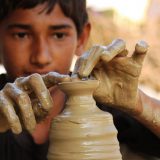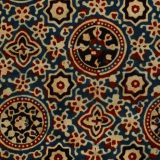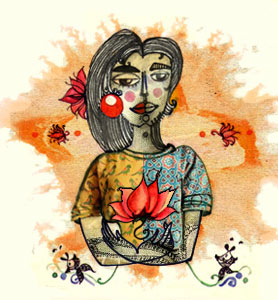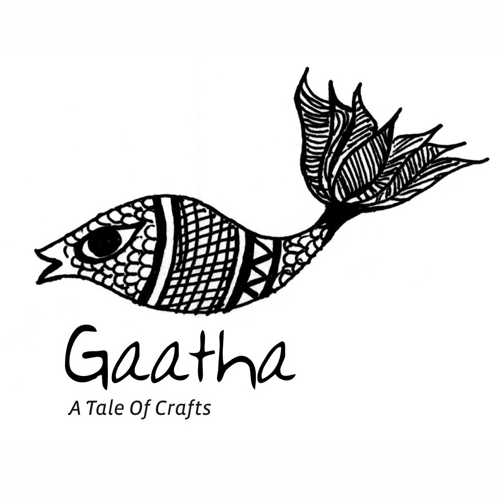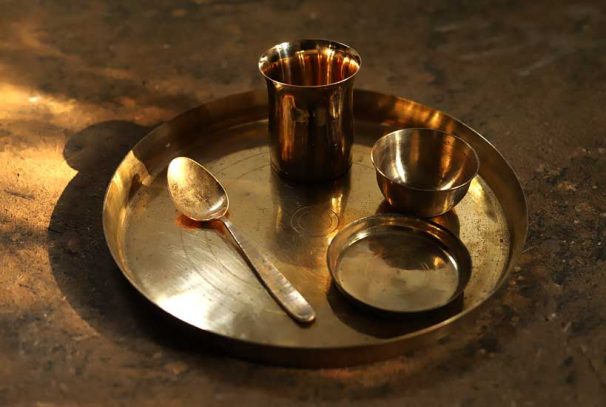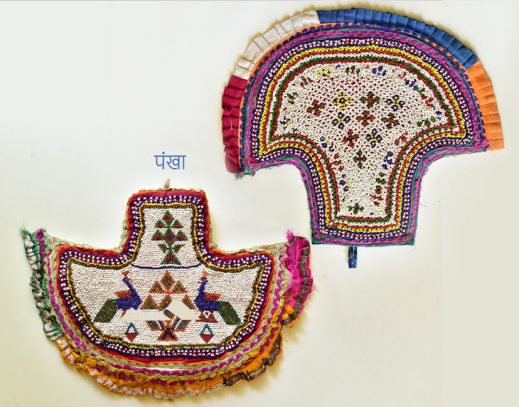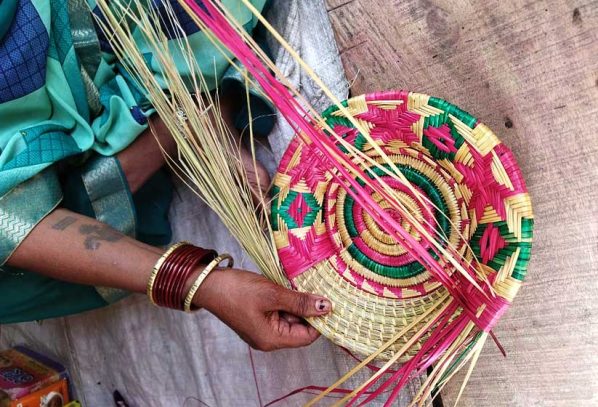Bobbili Veena

Darsana sparsane chasya bhoga svargapavargade |
Punito viprahatyadi patakaih patitam janam ||
Danda sambhuruma tantri kakubhah kamalapatih |
Indra patrika brahma tumbam nabhih sarasvati ||
Dorako vasukirjiva sudhamsuh sarika ravih |
Sarvadevamayi tasmad veeneyam sarvamangala ||
|| Sarangadeva ||
Carnatic musicologist of the 13th century
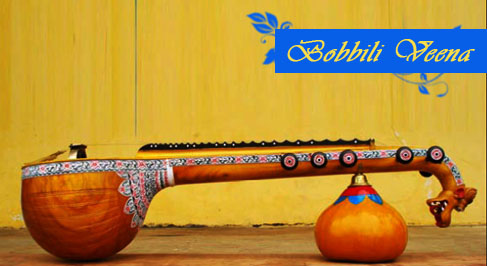
By seeing and touching the veena, one attains the sacred religion and liberation.
It purifies the sinner, who is been guilty of killing a Brahmin.
The danda, made of wood or Bamboo, is Siva, the string is Devi Uma, The shoulder
is Vishnu, the bridge is Lakshmi, the gourd is Brahma, the navel is Sarasvati,
The connecting wires are vasuki, the jiva is the moon and the pegs are the sun.
The veena thus represents nearly all the Gods and Goddesses,
And is, therefore, capable of bestowing all kinds of divine blessings, benediction and auspiciousness.

Instrumental music has been an integral part of Indian culture for centuries. This is evident from the innumerable treatises on music in ancient India and famous sculptures in ancient places of worship depicting musicians. Gods and Goddesses are often depicted playing various instruments, particularly the Goddess of learning and the arts, the Goddess Saraswati, who’s image is never seen without a Veena.
Although string instruments of almost all types were called “Veena” in ancient Indian texts, the Veena with its long neck and rounded resonators is considered to have ancient origins. Today, some of the main types of Veena played are: the Rudra Veena (also known as the been or bin), the Saraswati Veena, the Vichitra Veena and the Chitraveena orGottuvadyam. Veena players are often referred to as Beenkars (or Binkars) or Vainikas.
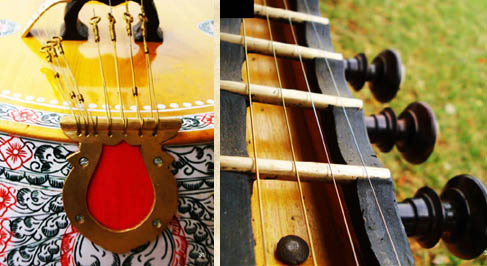
The “Saraswati Veena” has become synonymous with the tradition and culture of India. Carnatic music played on these Saraswati Veenas has won the hearts of millions of music lovers the world over, transcending geographical barriers and regional cultures.
Veenas are also known by the town where they are made, for example, Tanjore Veena, Mysore Veena, etc. The Saraswati Veenas made in Bobbili are also sometimes referred to as Bobbili Veenas. Bobbili, a town 55 km from Vizianagaram , has a unique style of playing the Veena, developed over three centuries. It is known as the “Bobbili veena sampradayam” and its exponents have performed to much acclaim from Indian and International audiences.
The history of making veenas dates back to the founder of Bobbili Kingdom, established in the 17th Century by Pedda Rayudu, when playing veena was leisure activity and had its importance in every social event. The women from the Bobbili kingdom played the Veena, which were supplied by Sarwasiddi community craftsmen who belonged to Gollapali. The Veena was specially made by Sarwasiddi Acchanna, the master craftsman who was appointed in Bobbili Kingdom.

To this date the practice of making Veena has been continued by the family members of the Sarwasiddi community which later has become alivelihood option and been carried over generations.
Veenas are made of Panasa wood (Jackfruit tree) which is lightweight and possesses qualities like excellent reverberation, clear grain lines, great durability and minimum swelling in moisture. It is acquired from the local deposits maintained by forest officials and also from nearby settlements.The wood is cut into the required size, around 4-5 ft in length. The uniqueness of the Bobbili and Nuzvidu Veenas is that they are carved out of a single log of wood. Such Veenas are called ekandi veena.
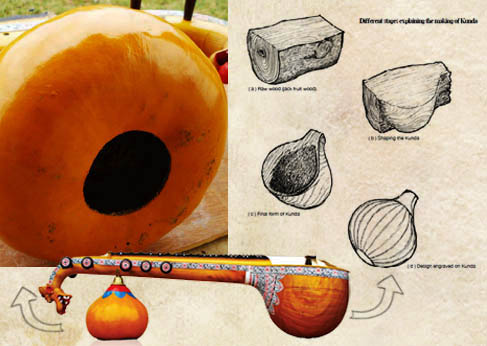
The Thumba is a spherical form fixed to the lower base of Dandi to give support. In a professional Veena, thumba is made of hollow pumpkin. In case the required size of pumpkin is not available, then thumba is made of aluminum sheet. Pumpkin is used as a resonator which helps in increasing the duration of the note played, and also for balancing the Veena to stand still when musician is not holding the instrument. All the fibrous matter in the pumpkin is removed and dried in sun for around 3 days and stored carefully. A metal pipe is screwed to the top of the pumpkin and connected to dandi to transfer the sound to pumpkin.
A fret board (danda) connects these two ends, with twenty-four brass frets set in wax and charcoal. The frets are set to halfsteps in two octaves. Four main strings traverse this fret-board, from a bridge at the right end to tuning pegs (biridais) at the left end. At this left end of the danda is attached a “yali”, which is a scroll that is carved into an elaborate head of a mythical animal. Three additional strings (talam strings) are set off to the side and are used for rhythmic emphasis.
Apart from the main body, certain brass and bronze parts are crucial for holding the wooden parts of the Veena together, for improving the tonal quality and also for adding to the aesthetic value of the instrument.
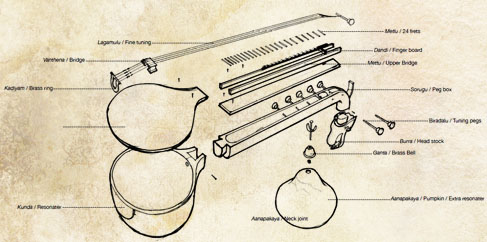
A major change in the material can be seen in the decorative inlay work, which used to be done on elephant tusks, now replaced by plastic. The patterns are engraved on the polypropylene. Lac is applied on the engraved surface filling them to produce patterns.
Thanjavur veenas are manufactured in great numbers, while Bobbili veena still remains a rural, small-scale industry. There are around 30 families in a small village called Gollapalli (near Bobbili), dependent on making this musical instrument for their livelihood.
Adapting to the changes demanded by the customers, for the past 15-20 years, the craftsmen have been making different instruments like the peacock Veenas, Swarnamandal, Tambura, Tabla set, Violin and Sitar. Bobbili and Vadada have now become more famous for producing ornamental miniature Veenas rather than the actual Veenas.
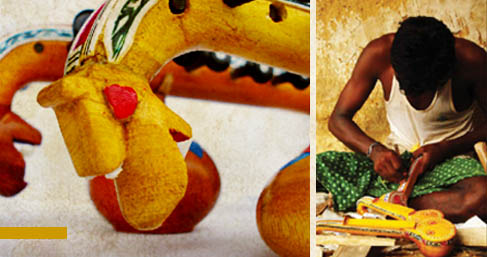
Even though the demand for Veenas is on a decline, as long as there are music lovers, the golden sounds of veena will continue to echo far and wide.
Other Veena Clusters ~ Tanjore, Mysore, Thiruvananthapuram, Rampur, Bobbili, Pithapuram and Bandar Veenas.
By ~ Vikram Boga
Read more here ~ Gaatha.org

